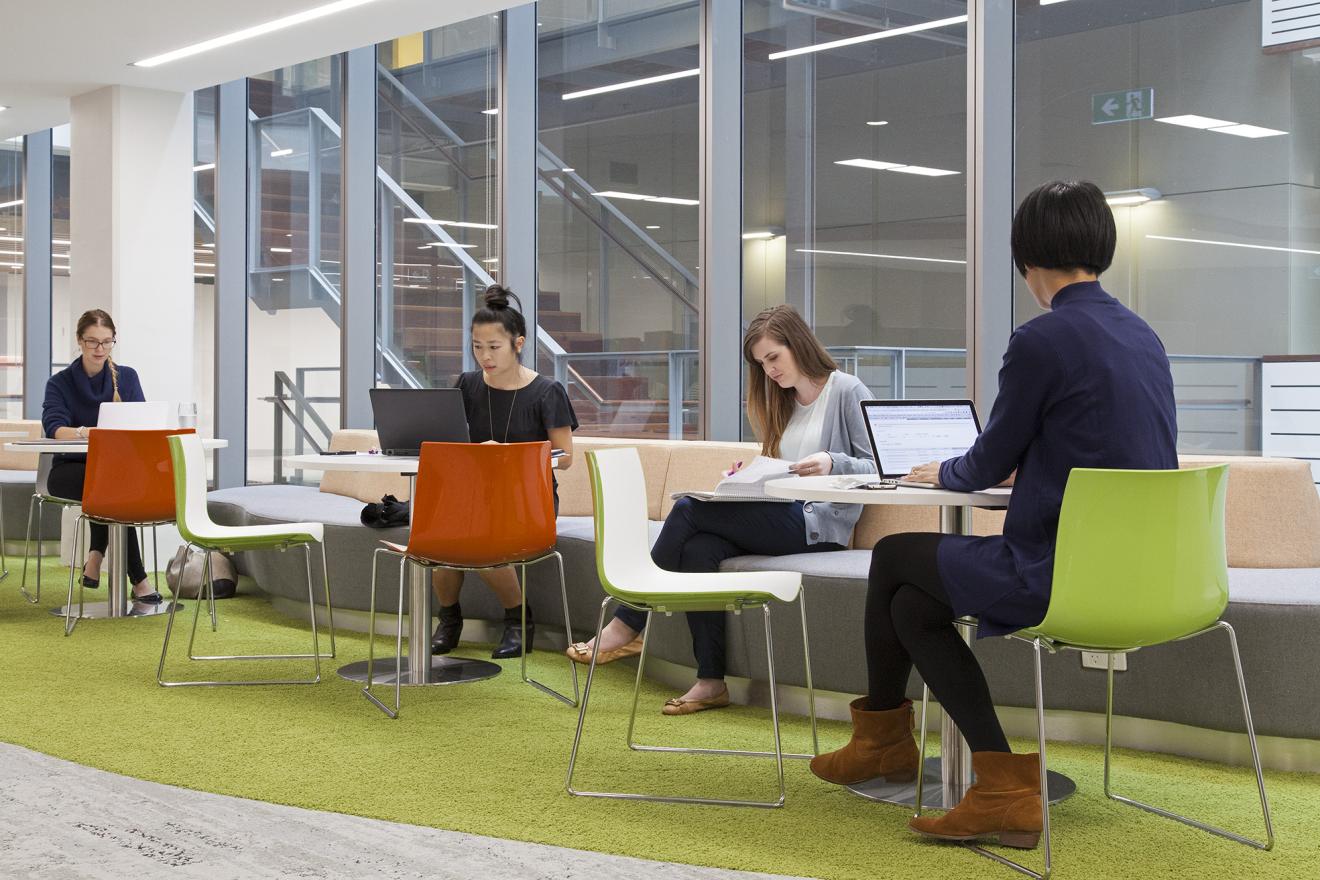
Keywords: scratch cards, participation, student-generated.
Faculty: Health
Mary Garvey teaches diagnosis to students studying traditional Chinese medicine. She covers a couple of different diagnostic areas each week and the students need to learn to carefully differentiate between medical conditions and determine which of the range of possible answers is more right than some of the others in order to come to an accurate diagnosis. To reduce the weighting of the exam Mary decided to assess diagnostic skills through in-class participation using scratch cards. Scratch cards are a multiple choice form that provide immediate feedback to students when they scratch off an opaque coating on a card to reveal the correct answer that lies underneath. Although it is a simple way to encourage student interaction and collaboration, Mary realised she didn’t have any multiple-choice questions that could be used for the activity. Working with Adam Morgan in the IML, Mary devised a process by which the students would write the multiple-choice questions for their peers. It quickly became obvious that the value in the exercise was in the students developing the questions rather than simply using the scratch cards.
Assessment activity
Students prepare their questions by revising the PowerPoint slides and any other activities related to the week’s diagnostic areas. Once they have identified a multiple-choice question they would like to develop, the students use a template devised by Mary to submit it. Before submitting their questions, students are instructed to undertake some further background research to check the accuracy of their answers. Mary encourages them to go beyond the textbook for answers and the students have on occasion turned to other sources, such as case and formula books. The justification provided for the right and wrong answers in the context of making the diagnosis is just as important as the question, and needs to be supported with references for the sources students have used.
In the following week students come to class having submit their multiple-choice question through the template, complete with answers and diagnosis choice justification. Each student presents their question to a small group of three or four students, who then discuss what they think may be the answer. There can be up to twenty groups in the workshop discussing the different answers and reasons for their choice of diagnosis. This process can be completed quickly, but sometimes the discussion will take off and carry on for longer.
After discussion, each group agrees on the best question submitted by one of the members, then in turns the groups pose their questions to the class for discussion. Before doing this, groups may rewrite the question they have selected to ensure that it is clear to the rest of the class. One of the group members presents the question to the class using the lectern and document projector, making sure that other class members can only see the question, but not the answer or justification. Mary supplies each group with large A, B, C and D cards, which students will hold up in answer to the questions. The class then engages in more discussion to decide which answer is the correct choice. Some of the answers can be quite close or there may be an element of controversy and the class will debate the answer. Mary tries to ensure that the students with the right answer explain why they chose a particular response, and the presenter's role is to convince their classmates he or she has a good reason for suggesting their answer is the right one. It is only rarely that Mary will disagree with the conclusion arrived at by the class and then she will intervene to explain why an alternative is the right answer.
Benefit for staff and students
Working through quiz questions of signs and symptoms in a tutorial can be boring for students and tutors. Having the students devise the quiz questions makes the session far more engaging with students actively debating the different answers. The noise level in the class during the in-class pop quiz can be incredible. Students would literally get out of their chairs and climb over the tables to convince someone they had the answer wrong. The active engagement ensures that students go away feeling that they know the material well. They have had to look at the details of the diagnosis very carefully and engage closely with all of the material that was presented during that the week before coming to the workshops. Mary now has a database of well over 100 questions that she can use for other purposes such as scratch card exercises, quizzes or in an exam.
Tips and advice
Manually entering the material from the templates can be very time consuming. Having students enter their questions directly into a database as well as bring them along to class can save a lot of time. Mary tries as much as possible to let the students run the in-class quiz themselves and resists the temptation to take over. She recommends leaving it to students to decide what is the right answer. Students are unlikely to have any idea on how to write multiple-choice questions and will need some advice on how to write a good quality questions and challenging answers. With a little guidance the students come to quite enjoy writing them. Students love the scratch cards. It is different from completing an online quiz by yourself. The scratch cards are very interactive and tactile, and you can see people punch in the air and whooping it up as the are working things out with their mates.
Photo by: Andrew Worssam

